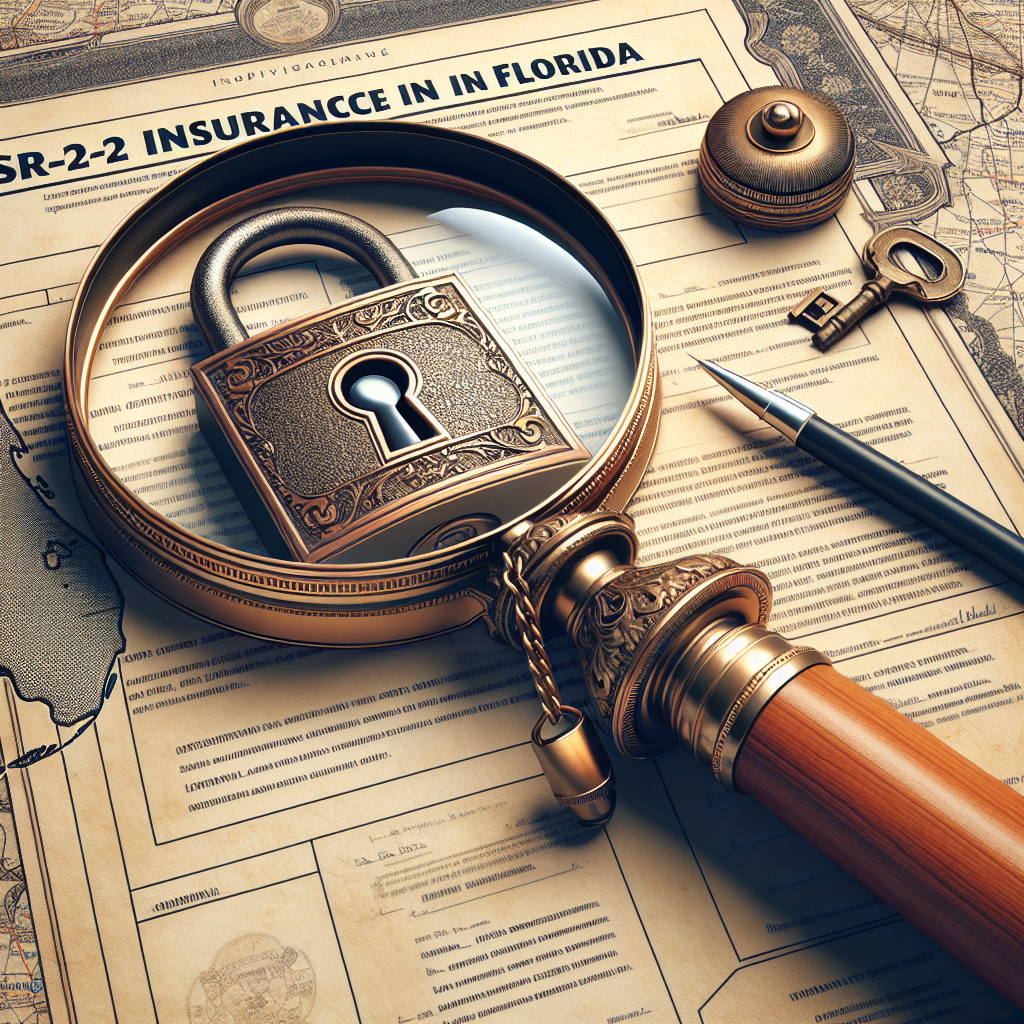
When Florida motorists sport a blemished driving record, they might find themselves tangled in the requirement to carry SR-22 insurance — or, more accurately, an SR-22 certificate — to stay on the right side of the law. Contrary to what the name suggests, an SR-22 isn’t an insurance policy by itself. Instead, it’s a formal declaration from your insurer confirming that you hold the mandatory minimum coverage. Your insurance provider submits this paperwork to the Florida Department of Motor Vehicles (DMV) upon your request.
While the SR-22 filing fee is typically a modest sum—hovering around $25—your wallet may take a deeper hit elsewhere. Because SR-22s are usually mandated for drivers with a history of traffic transgressions, insurers often hike up premiums compared to those offered to squeaky-clean drivers. In some instances, certain insurers might straight-up refuse to file your SR-22, nudging you to seek out companies more amenable to high-risk clients.
Decoding the SR-22 Certificate
Think of the SR-22 as a proof-of-insurance form that confirms you carry a policy meeting Florida’s minimum liability coverage. The insurance companies tend to slot SR-22 recipients into policies with coverage limits such as:
- $10,000 bodily injury per person, per accident
- $20,000 total bodily injury liability per accident
- $10,000 property damage liability per accident
These thresholds represent the financial safety net you’re mandated to have in place, signaling to the DMV that you can back up your responsibility financially if mishaps occur on the road.
Quick facts: According to Florida’s Department of Highway Safety and Motor Vehicles, about 1 in 20 drivers carries an SR-22 at any given time due to infractions like DUIs, reckless driving, or multiple traffic violations.
What Sets SR-22 Apart From FR-44?
Though both involve certificates tied to insurance coverage, SR-22s and FR-44s serve different flavors of financial proof. The SR-22 acts as a “Certificate of Financial Responsibility” verifying minimum insurance for drivers with violations like reckless driving or lapses in coverage. In contrast, the FR-44 is a beefed-up document requiring higher liability limits and is generally reserved for more severe offenses such as DUI convictions.
To emphasize, FR-44 coverage demands are steeper:
| Bodily Injury per Person | $10,000 | $100,000 |
| Total Bodily Injury per Accident | $20,000 | $300,000 |
| Property Damage per Accident | $10,000 | $50,000 |
The FR-44’s heightened coverage requirements act as a financial safeguard for riskier drivers who have demonstrated serious infractions.
Price Tag of Holding SR-22 Insurance in the Sunshine State
Beyond the relatively small $15-$25 fee for filing the SR-22 paperwork, the true pinch often comes from the insurance premiums themselves. Drivers who have faced suspensions or revocations are perceived as higher-risk gamblers on wheels, making insurance providers wary of covering them without charging extra dough. The aftermath is typically a steeper premium, reflecting the increased likelihood of costly accidents or claims.
Because an SR-22 is tied to your driving record’s offense history, as long as those black marks remain, you’ll need to maintain this pricier insurance arrangement. Usually, an SR-22 certificate and its corresponding policy must stay active for roughly three years — the time it often takes for tangled violations to clear from your record.
For folks who don’t own a vehicle but still need to satisfy SR-22 mandates (such as after a license suspension), non-owner car insurance is a handy option. This type of policy insures you, not a particular car, letting you legally operate someone else’s ride while maintaining compliance. After purchasing non-owner insurance, the company can issue the SR-22 certificate, helping you regain your driving privileges.
Frequently Asked Questions
How Can I Obtain an SR-22?
First, contact your current or a prospective insurance carrier that’s open to high-risk drivers. You’ll pay a modest filing fee—normally about $25—for them to process the SR-22 form and deliver it straight to the DMV. If you’re currently uninsured, securing a policy with a willing insurer is the first step before requesting the certificate.
When Can I Remove My SR-22?
Typically, the SR-22 sticks around on your record for a three-year stretch. It doesn’t vanish automatically at that point; you’ll need to ask your insurer to discontinue filing the form. Often, your premiums will drop after removal. Beware: allowing your policy to lapse or canceling it while carrying an SR-22 will trigger your insurance company to inform the DMV, which usually leads to a license suspension.
Which Companies Provide SR-22 Insurance in Florida?
Not all insurance carriers are game to insure high-risk drivers or submit SR-22 forms. Some insurers known for working with SR-22 clients in Florida include Geico, USAA, Progressive, and The General. It’s wise to explore providers who specialize in non-standard or high-risk auto insurance to find the best deal.
What Are Florida’s Minimum Auto Insurance Requirements?
Florida mandates a minimum of Personal Injury Protection (PIP) coverage and $10,000 in property damage liability. These limits, however, are often considered the bare minimum and might not fully cover expenses from serious crashes. Additional coverages like collision and comprehensive insurance are optional add-ons that protect your own vehicle beyond what the state requires.